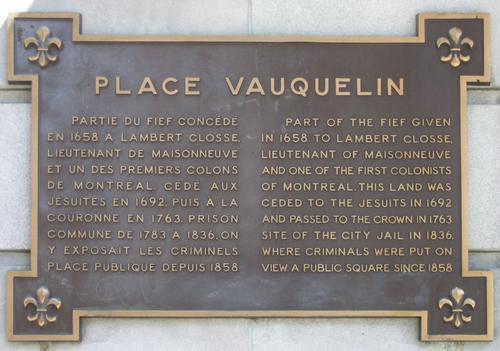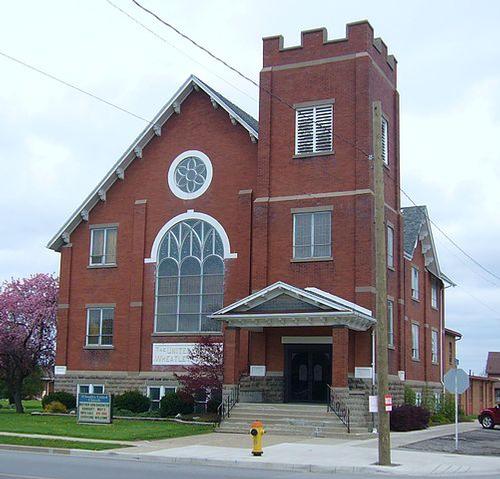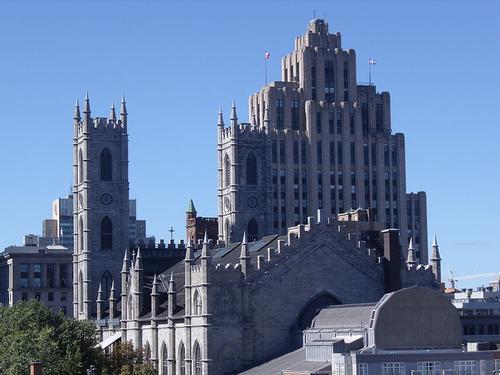NORTHWEST TERRITORIES
Population

Population

Popular destinations CANADA
| Alberta | British columbia | Manitoba |
| New brunswick | Newfoundland and labrador | Northwest territories |
| Nova scotia | Nunavut | Ontario |
| Prince edward island | Quebec | Saskatchwan |
| Yukon |
Population
Despite the size of the territory, Northwest Territories has no more than over 40,000 inhabitants (2017), about 40% of whom live in the capital, Yellowknife. There are no other towns in the territory with more than 5,000 inhabitants.
Language

Canada has two official languages, English and French. French is the mother tongue of 24% of the population, English of 63% of the population.
Canadians have their own distinctive accent, but written Canadian English is very similar to English in Britain. Outside of Quebec, fewer and fewer people are native French speakers, and while French-speaking communities still exist in the maritime provinces of Manitoba and Ontario, in some areas the language has been heavily influenced by English in terms of words and sentence structure. This has led to an incomprehensible mixing language for an outsider, which is called "franglais".
At the urging of the French speakers from Québec, the Canadian federal government decided in 1969 to officially make all of Canada bilingual.
French is the official language in Québec, but English is predominant in the rest of Canada. The Ottawa government center is bilingual, as all officials must have a command of both French and English.
French has changed considerably over time. Especially in the big cities, the "Canadiens" use more and more anglicisms. Some words that are already obsolete in France are still used here, such as "charette" for dump truck and "fin-de-semaine" instead of "le weekend". Furthermore, there is a huge variation in the type of French spoken. Over time, a dialect called "Joual" has emerged in Québec.
Some expressions from Joual:
- Avoir lair anglais = looking strange
- Very much = am gross
- Dollar = piastre
- Cents = bidous
Eight indigenous languages are spoken in the Yukon Territory of northwestern Canada. Seven of them are from the Athapasque language family: Gwich'in, Han, Kaska, Northern Tutchone, Southern Tutchone, Tagish and Upper Tanana. Furthermore, Tlingit is spoken, which is somewhat related to Athapasque.
The inhabitants of Newfoundland have their own dialect with a somewhat Irish accent, but with unique words and expressions:
A very difficult assignment = to have a noggin to scrape
Without worries = in a hobble
He bothers me = he is moidering my brains
Good luck = long may your big good jib draw
The Inuktitut, the language of the Inuit, is a living language and is still growing. It is a widespread language in northern Canada, and Inuit across the Arctic can understand each other. Dialects and accents vary from region to region, but Inuktitut is a standalone language.
One of the first things to notice is that a word with the same meaning is spelled in different ways. When a writing system was developed about 100 years ago, the words were written phonetically, and those phonetic versions differed per region.
Since the seventies of the last century, attempts have been made to develop a standard Inuktitut, but that is still very difficult.
The English whalers brought along several words that are clearly recognizable as such:
- Tea - tii
- Sugar - sukaq
- Waistcoat - uasikuaq
- Paper - paipaaq
Other words and phrases from Inuktitut:
- Father - ataata
- Mother - anaana
- Son - irniq
- Daughter - panic
- Winter - ukiuq
- Summer - auja
- The wind blows - anuraaqtuq
- Mist - taktuk
- Wind - anuri
- How are you? - Qanuipit?
- Thank you - Qujannamiik
- Help! - ikajunga!
- Yes - ii
- No - aaka or aagaa
The name Canada is derived from the Iroquis Indian word "kanata", which literally means "place of business".
More than 50 different Indian languages and dialects are spoken in Canada, each belonging to one of the ten basic language groups. The largest of these is the Algonquin, followed by the Athabasca, Iroquoi, Salish, Wakasha, Tsminschian, Sioux, Kootenai, Haida and Tlingit.
Many place names are of Native American origin:
- Kelowna (British Columbia) = grizzly bear
- Kamloops (British Columbia) = intersection of waterways
- Ucluelet (British Columbia) = people with a safe haven
- Saskatchewan = river with spinning current
- Manitoba = great life force
- Winnipeg (Manitoba) = cloudy, dark water
- Quebec = when the river widens
- Lake Cowichan (British Columbia) = heated by the sun
- Takakaw (British Columbia) = it is beautiful
- ukon = large water
- Kluane (Yukon Territory) = place with a lot of fish
- Ontario = beautiful water
- Penetanguishene (Ontario) = place of the undulating white sand
- Ottawa (Ontario) = place to buy and sell
- Toronto (Ontario) = meeting point
- Gaspé (Québec) = where the country ends
Religion
 Wheatley United Church of CanadaPhoto: Ducio1234 in the public domain
Wheatley United Church of CanadaPhoto: Ducio1234 in the public domain
In the 16th century, due to the immigration of the French, the population of Canada was mainly Roman Catholic. In 1759 Canada came into British hands, after which Protestant churches from Great Britain were given the opportunity to expand here, and Canada gradually became more Protestant.
Canada is home to almost all denominations and philosophical groups. At present, approximately 45% of the population is Roman Catholic, mainly French speakers, 18% belong to the United Church of Canada, 12% belong to the Anglican Church of Canada, 3% are Presbyterian, 3% Lutheran and 2 .5% Baptist. Also to be mentioned are the Reformed Church, to which many Dutch Reformed immigrants joined, and the Christian Reformed Church, to which many Reformed members have joined.
The Catholics of the Byzantine rite - mainly (descendants of) immigrant Ukrainians (Ruthenians) - have their own hierarchy and monasteries in Canada. Canada has over 340,000 Jewish residents and many Muslims, Buddhists and Hindus.
Canada also owns an Amish community in Ontario. The Amish or Ammanites are a spin-off from the Christian Mennonite community founded in Europe in the early 16th century. They were prosecuted for refusing to take the oath or carry weapons. In the 17th century an even stricter sect split off, emigrating to America and in 1799 to Ontario.
| Religion | 1981 | 1991 |
| Non-believers | 7,4% | 13,0% |
| Buddhists | 0,2% | 0,6% |
| Catholics | 47,3% | 45,7% |
| Protestants | 41,2% | 36,2% |
| Eastern Orthodox | 1,5% | 1,4% |
| Hindu | 0,3% | 0,6% |
| Muslims | 0,4% | 0,9% |
| Jews | 1,2% | 1,2% |
| Sikhs | 0,3% | 0,5% |
| Others | 0,2% | 0,2% |

One of the most beautiful churches in North America is the Catholic Basilique Notre-Dame in Montreal. The original building is from the 17th century, but construction of a new church started in 1829. The church offers 3800 places in the nave and on the balconies.
Montreal's largest church is the Oratoire Saint-Joseph. The octagonal copper dome is one of the largest in the world - 44.5 meters high and 38 meters in diameter. The city of Montreal also has more than 300 churches and metropolitan Montreal even 450. Of these, 70% are Roman Catholic, 20% Protestant, 4% synagogues and 6% are churches of other denominations.
The Church of Inuvik, in the far north of Canada, was built in the shape of an igloo because of the climate.
The Cathédrale de Gaspé on the Gaspé Peninsula is North America's only wooden cathedral. Church Point, Nova Scotia, is dominated by the early 20th century Saint Mary's Church, the tallest and largest wooden church in North America.
The Basilique Notre-Dame-de-Québec is more than 350 years old and the oldest parish in North America.
The Cathédrale Anglicane in Québec-City is the first Anglican cathedral to be dedicated outside Britain (1804).
Winnipeg has the largest Ukrainian group outside Ukraine in its territory. The many Russian Orthodox churches with their onion-shaped domes and spiers testify to this, such as the Holy Trinity Ukrainian Orthodox Cathedral, the St. Vladimir and Olga Ukrainian Catholic Church and the St. Nichols Ukrainian Catholic Church. These churches are also part of the landscape in the prairies. The first Ukrainian churches were built from the beginning of the massive Ukrainian influx that started in the late 19th century, affecting both Roman Catholics and Russian Orthodox.
Near Cardston, in the Waterton Lakes National Park, is Canada's only Mormon temple, a snow-white structure built in 1913.
Sources
Elmar Landeninformatie
Wikipedia
CIA - World Factbook
BBC - Country Profiles
Copyright: Team The World of Info